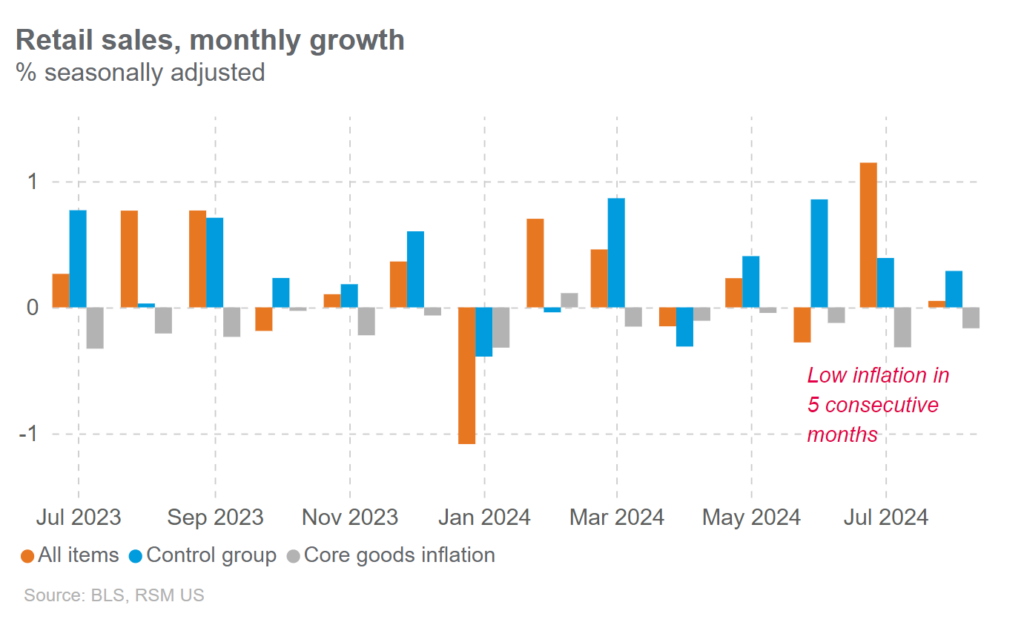Shopping
U.S. retail sales and industrial production beat expectations

Retail sales in the United States increased by 0.1% in August—much closer to our forecast of a 0.2% increase compared to the market consensus of a 0.2% decline. The stronger-than-expected retail sales data came as industrial production also topped forecasts in August, growing by 0.8% from a month ago.
The data should temper the market’s concern about growth that has triggered calls for a 50 basis-point cut by the Fed.
Taken together, Tuesday’s data strengthened our case that growth should remain strong in the third quarter.
Both retail sales and industrial production metrics are used by the National Bureau of Economic Research to determine whether the economy is in a recession. The data continues to point to an economy that is not in a recession as many are predicting.
More importantly, since retail sales data mostly covers goods purchases, the underlying spending data should be even stronger after adjusting for inflation because goods prices actually dropped in August, according to the consumer price index data.
After accounting for the change in goods prices, we think retail sales volume should increase by between 0.2% to 0.3% in August.
Similarly, the key control group, which feeds into the calculation of gross domestic product for the third quarter, should grow between 0.4% to 0.5% on an inflation-adjusted basis.
If such strong results continue in September, goods spending in the third quarter could top last quarter’s performance, which grew by 3.0% on a quarterly annualized basis.
Besides a strong labor market that supports higher wage and income growth, the rapid drop in goods inflation has been a key reason why consumer spending continues to defy expectations.
Goods inflation has been in negative territory for 14 of the past 15 months, driven by the normalization of supply chains and lasting discount programs.
Read more of RSM’s insights on monetary policy, the economy and the middle market.
The data should temper the market’s concern about growth that has triggered calls for a 50 basis-point cut in the Federal Reserve’s policy rate at its meeting this week.
We believe that with this solid data, there is a much higher chance that the Fed will move forward with a 25 basis-point cut. At the time of growing uncertainty both economically and politically, we don’t see any reason for a jumbo cut that would only fuel volatility.
Inside the data, six out of 12 categories had solid gains in August, led by nonstore and online sales, which increased by1.4% and accounted for more than 17% of total sales. Sales at gas stations posted the biggest drop, at 1.2%, mostly because of the drop in gasoline prices.










